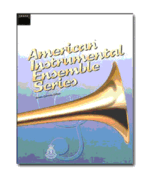-
Here Is Love (Bb/C/BC solo)
$9.95“Here Is Love” was originally penned by the Welsh poet William Rees (1802-1883) then translated from Welsh into English by William Edwards (1848-1929). The text is based on one of the most famous Scripture references, John 3:16 “For God so loved the world that he gave his one and only Son, that whoever believes in him shall not perish but have eternal life” (NIV). The beautiful melody that accompanies the text was composed by American gospel songwriter Robert Lowry in 1876. Although this hymn is 150 years old, it remains popular today.
-
Here Is Love (Bb/C/BC solo)
$29.95“Here Is Love” was originally penned by the Welsh poet William Rees (1802-1883) then translated from Welsh into English by William Edwards (1848-1929). The text is based on one of the most famous Scripture references, John 3:16 “For God so loved the world that he gave his one and only Son, that whoever believes in him shall not perish but have eternal life” (NIV). The beautiful melody that accompanies the text was composed by American gospel songwriter Robert Lowry in 1876. Although this hymn is 150 years old, it remains popular today.
-
I Want Jesus To Walk With Me
$29.95African American spirituals are a rich part of our nation’s history – offering songs of hope for the oppressed as well as soulful hymns for the Church. “I Want Jesus to Walk With Me” is one such spiritual. While the text references many trials that must be endured, it maintains a sense of hope. It is a prayer to God to be with us throughout all our life, and with Jesus, we will overcome the trials.
The tune follows a similar pattern. Even though the melody is in a minor key, the repetitive form and quick tempo portray an upbeat thought, despite the trials that are being depicted.
-
Christmas in France
$29.95This suite of three movements features popular French Christmas songs. “Il Est Né” (“He Is Born”) tells the story of the Heavenly child being born in a stable. “Patapan,” an older carol, published in 1720, speaks of the shepherds bringing their flutes and drums with them to celebrate the birth of the Savior. The final majestic tune, “March of the Three Kings” (or “Farandole” from Bizet’s L’Arlésienne) paints the picture of the Magi completing the manger scene.
-
-
Deck The Halls on High, Deck The Halls, Ding Dong Merrily on High
$24.95Deck The Halls on High, Deck The Halls, Ding Don Merily on High
-
-
-
-
-
-
-
-
-
-


